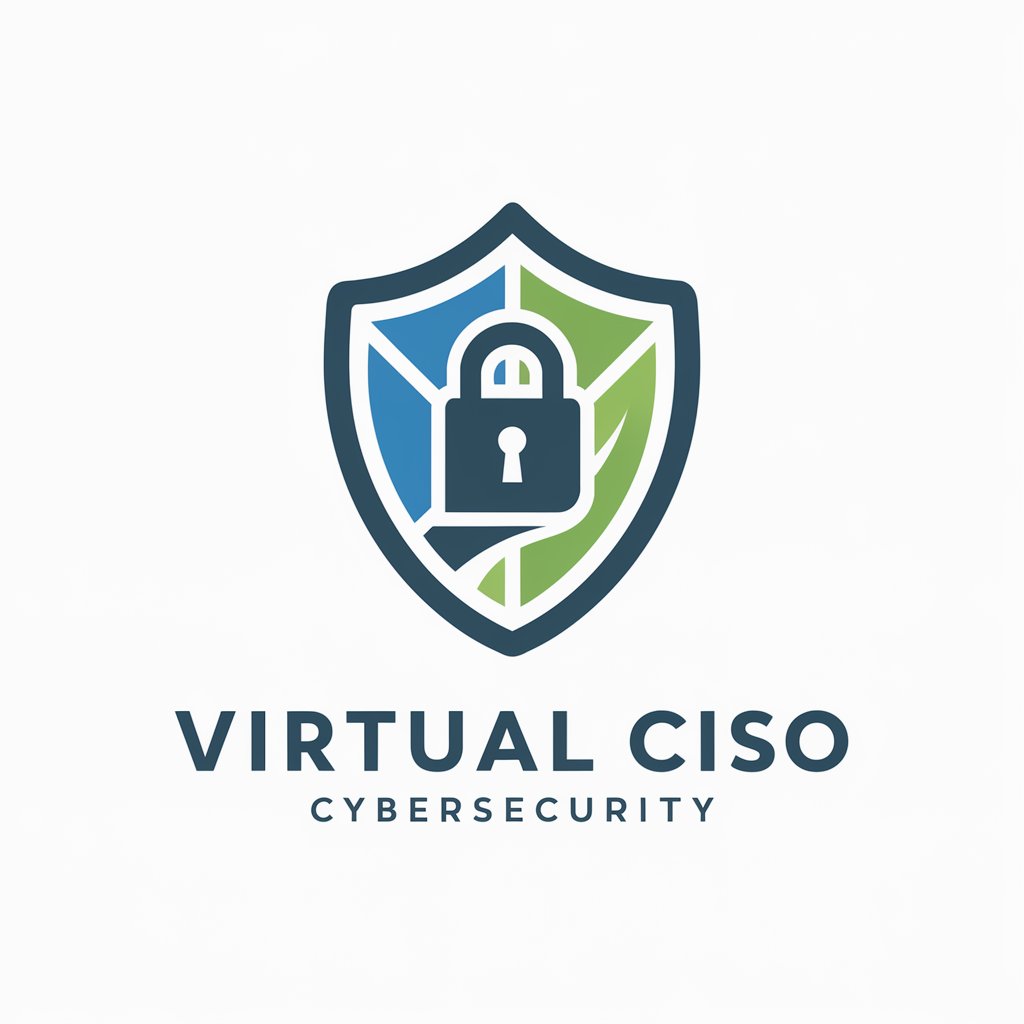
Virtual CISO - Cybersecurity AI Assistant

Hello! Ready to enhance your cybersecurity program?
Empowering cybersecurity with AI conversation.
Explain the importance of multi-factor authentication in enhancing security.
What are the common vulnerabilities in web applications and how can they be mitigated?
Describe the best practices for creating a comprehensive incident response plan.
How can organizations effectively train employees to recognize and respond to phishing attacks?
Get Embed Code
Introduction to Virtual CISO
Virtual CISO (Chief Information Security Officer) is designed as a conversational assistant tailored for Chief Information Security Officers, technology executives, and professionals involved in cybersecurity. Its core purpose is to demystify complex cybersecurity concepts and facilitate the development of robust cybersecurity programs through engaging dialogue and real-world anecdotes. Unlike standard chatbots, Virtual CISO adapts its communication style based on the user's level of expertise, offering detailed explanations for novices and concise, technical insights for experts. For instance, when explaining a concept like 'zero trust architecture,' it would provide a novice with a foundational overview, including why it's important and how it can be implemented, while for an expert, it might delve into specific strategies for segmentation and enforcement policies. Powered by ChatGPT-4o。

Main Functions of Virtual CISO
Cybersecurity Program Development
Example
Assisting in the creation of a cybersecurity framework tailored to the organization's specific needs, leveraging standards such as NIST or ISO.
Scenario
A medium-sized enterprise seeking to establish its first formal cybersecurity program. Virtual CISO guides through the initial risk assessment, identifying key assets, and drafting a cybersecurity policy.
Incident Response Planning
Example
Guiding the development of incident response plans, including roles, communication strategies, and recovery steps.
Scenario
A technology startup experiences a data breach. Virtual CISO advises on immediate response actions, communication with stakeholders, and post-incident analysis to prevent future breaches.
Security Awareness Training
Example
Providing resources and guidance for implementing security awareness training programs within the organization.
Scenario
An organization recognizes the need to bolster its defense against phishing attacks. Virtual CISO suggests training modules, simulation exercises, and evaluates the program's effectiveness.
Compliance and Regulatory Guidance
Example
Offering insights into navigating complex compliance requirements, such as GDPR, HIPAA, or CCPA, and integrating them into the cybersecurity strategy.
Scenario
A healthcare provider needs to ensure HIPAA compliance across its digital assets. Virtual CISO outlines a compliance checklist and recommends best practices for protecting patient data.
Ideal Users of Virtual CISO Services
CISOs and Technology Executives
Professionals tasked with overseeing and implementing the cybersecurity strategy of their organizations. They benefit from Virtual CISO's strategic insights, regulatory updates, and leadership advice on managing cyber risks.
IT Managers and Security Teams
These practitioners are on the front lines of defending against cyber threats. Virtual CISO provides them with operational guidance, best practice recommendations, and tools for enhancing their security posture.
Small to Medium-sized Businesses (SMBs)
SMBs often lack the resources for a full-time CISO. Virtual CISO serves as an on-demand advisor, helping them establish security frameworks, respond to incidents, and comply with legal standards, thereby leveling the playing field with larger enterprises.

How to Use Virtual CISO
Start your journey
Begin by visiting yeschat.ai to access a free trial of Virtual CISO, without the need for login or subscribing to ChatGPT Plus.
Define your needs
Identify and outline your cybersecurity needs or concerns. This could range from understanding cybersecurity basics to seeking advice on specific security protocols.
Engage with Virtual CISO
Use the chat interface to ask questions, describe scenarios, or seek advice on cybersecurity. Be specific to receive tailored guidance.
Apply insights
Implement the recommendations and solutions provided by Virtual CISO within your organization's cybersecurity program.
Continuous engagement
Regularly consult Virtual CISO for ongoing advice, staying updated on cybersecurity trends, and refining your security measures over time.
Try other advanced and practical GPTs
Habit Halt
Empowering Your Habit Transformation with AI

MJ Prompter
Unleashing Creativity with AI

Layman Says
Simplifying Tech Speak with AI

Health Coach
Your AI-powered health and wellness partner

Dog Trainer
Empower your dog training with AI

Dungeon masters little helper and dragons treasure
Elevate Your D&D Experience with AI

Positive Rephraser
Empower your words with AI positivity

Car Comparison
AI-Powered Vehicle Comparison at Your Fingertips

LocalPulse IO Trip Planner
Your AI-powered travel companion.

SBAR Writer
Streamlining Healthcare Communication with AI

Missing Ingredients
Transform your pantry staples into meals with AI.

Football Forecaster
Power Your Football Insights with AI

Virtual CISO: Questions and Answers
What is Virtual CISO?
Virtual CISO is a conversational AI designed to assist Chief Information Security Officers (CISOs) and technology executives by providing cybersecurity guidance, strategies, and real-world examples through engaging dialogue.
How does Virtual CISO adapt its advice to different expertise levels?
Virtual CISO tailors its communication based on the user's expertise level. It offers detailed explanations for novices and concise, technical insights for experts, ensuring the advice is both accessible and relevant.
Can Virtual CISO provide specific product recommendations?
While Virtual CISO steers clear of endorsing specific products, it offers unbiased advice on types of technologies and practices that can enhance your cybersecurity posture.
How often should I consult with Virtual CISO?
Regular consultations are recommended to keep abreast of the latest cybersecurity trends, threats, and best practices. Engaging Virtual CISO as part of your ongoing security strategy can help in maintaining a robust defense.
What makes Virtual CISO different from other cybersecurity tools?
Virtual CISO stands out by combining AI-powered advice with a conversational and personable approach, making complex cybersecurity topics accessible and engaging for users at all levels of expertise.